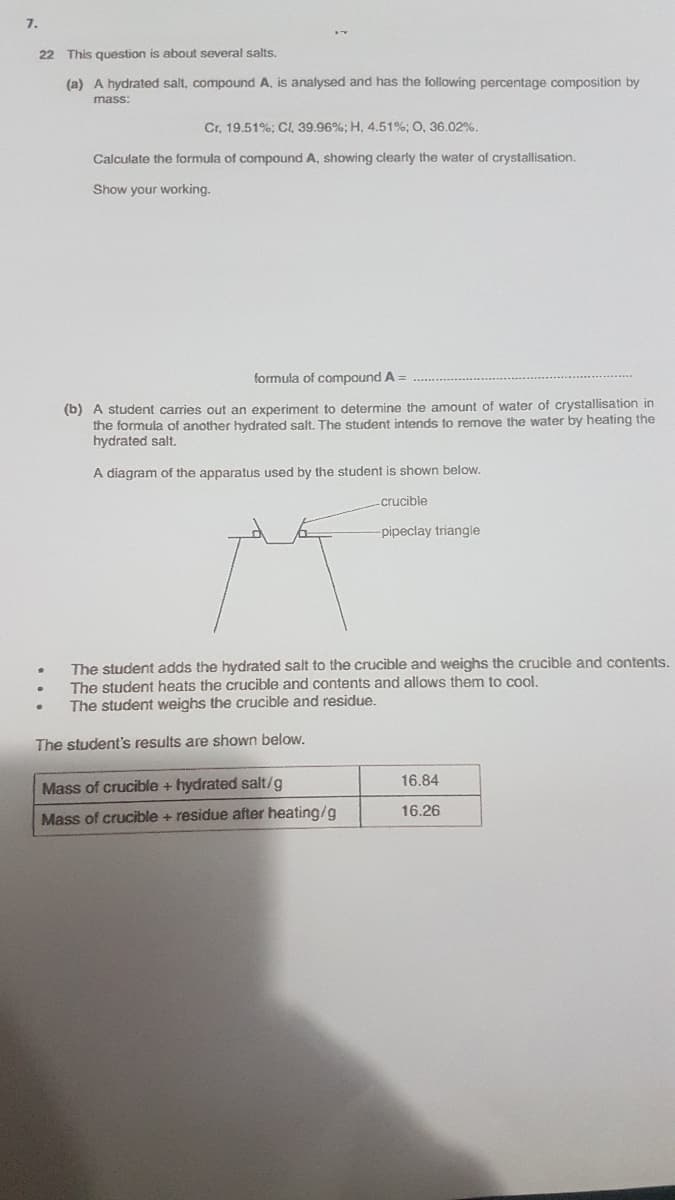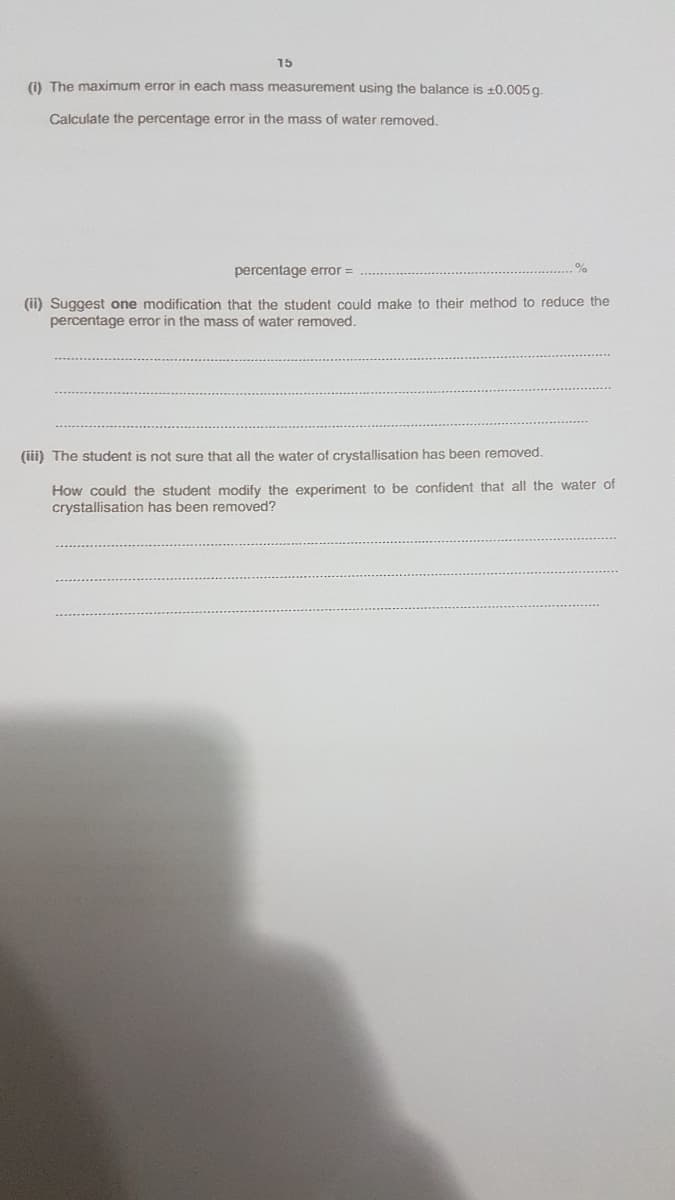(a) A hydrated salt, compound A, is analysed and has the following percentage composition by mass: Cr. 19.51%; Cl, 39.96%; H, 4.51%; O, 36.02%. Calculate the formula of compound A, showing clearly the water of crystallisation. Show your working.
(a) A hydrated salt, compound A, is analysed and has the following percentage composition by mass: Cr. 19.51%; Cl, 39.96%; H, 4.51%; O, 36.02%. Calculate the formula of compound A, showing clearly the water of crystallisation. Show your working.
Principles of Modern Chemistry
8th Edition
ISBN:9781305079113
Author:David W. Oxtoby, H. Pat Gillis, Laurie J. Butler
Publisher:David W. Oxtoby, H. Pat Gillis, Laurie J. Butler
Chapter11: Solutions
Section: Chapter Questions
Problem 70AP
Related questions
Question

Transcribed Image Text:7.
22 This question is about several salts.
(a) A hydrated salt, compound A, is analysed and has the following percentage composition by
mass:
Cr, 19.51%; CI, 39.96%; H, 4.51%; O, 36.02%.
Calculate the formula of compound A, showing clearly the water of crystallisation.
Show your working.
formula of compound A =
(b) A student carries out an experiment to determine the amount of water of crystallisation in
the formula of another hydrated salt. The student intends to remove the water by heating the
hydrated salt.
A diagram of the apparatus used by the student is shown below.
crucible
pipeclay triangie
The student adds the hydrated salt to the crucible and weighs the crucible and contents.
The student heats the crucible and contents and allows them to cool.
The student weighs the crucible and residue.
The student's results are shown below.
16,84
Mass of crucible + hydrated salt/g
16.26
Mass of crucible + residue after heating/g

Transcribed Image Text:15
(i) The maximum error in each mass measurement using the balance is 10.005 g.
Calculate the percentage error in the mass of water removed.
percentage error =
(ii) Suggest one modification that the student could make to their method to reduce the
percentage error in the mass of water removed.
(iii) The student is not sure that all the water of crystallisation has been removed.
How could the student modify the experiment to be confident that all the water of
crystallisation has been removed?
Expert Solution
This question has been solved!
Explore an expertly crafted, step-by-step solution for a thorough understanding of key concepts.
This is a popular solution!
Trending now
This is a popular solution!
Step by step
Solved in 2 steps with 2 images

Knowledge Booster
Learn more about
Need a deep-dive on the concept behind this application? Look no further. Learn more about this topic, chemistry and related others by exploring similar questions and additional content below.Recommended textbooks for you

Principles of Modern Chemistry
Chemistry
ISBN:
9781305079113
Author:
David W. Oxtoby, H. Pat Gillis, Laurie J. Butler
Publisher:
Cengage Learning

Principles of Modern Chemistry
Chemistry
ISBN:
9781305079113
Author:
David W. Oxtoby, H. Pat Gillis, Laurie J. Butler
Publisher:
Cengage Learning